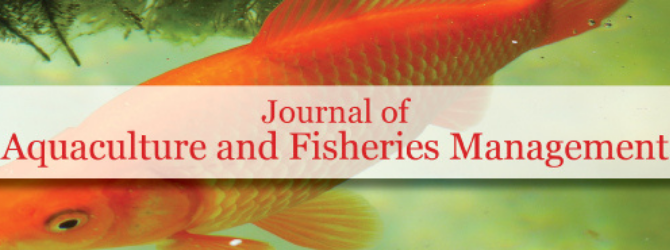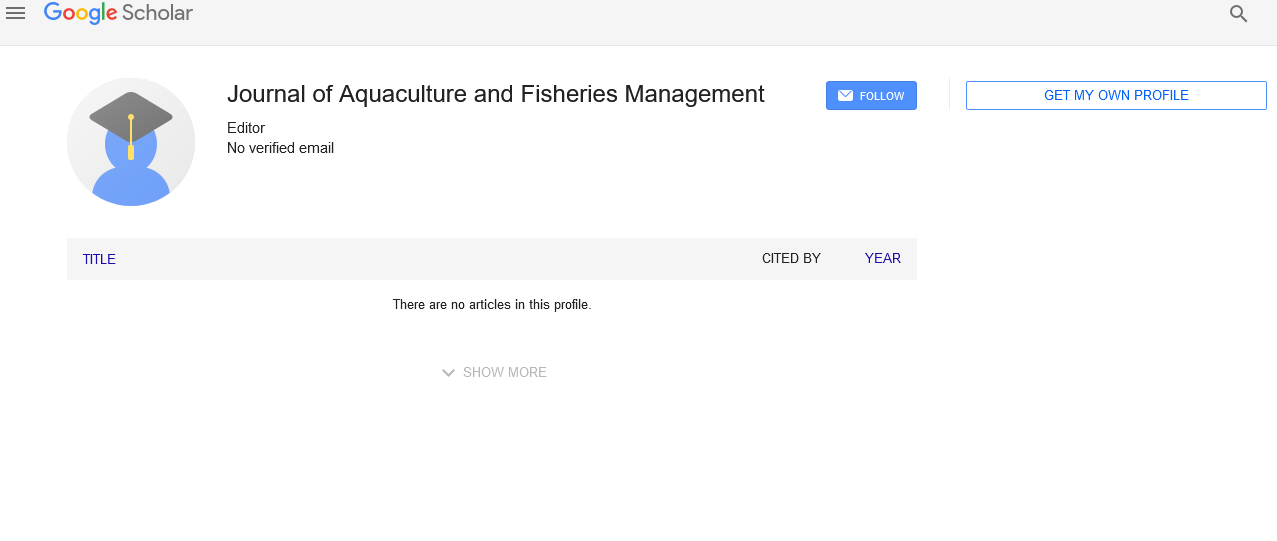Insects as a feed ingredient for fish culture: status and trends
Received: 07-Dec-2021 Accepted Date: Dec 18, 2021; Published: 28-Dec-2021
This open-access article is distributed under the terms of the Creative Commons Attribution Non-Commercial License (CC BY-NC) (http://creativecommons.org/licenses/by-nc/4.0/), which permits reuse, distribution and reproduction of the article, provided that the original work is properly cited and the reuse is restricted to noncommercial purposes. For commercial reuse, contact reprints@pulsus.com
Description
Aquaculture of fish is an crucial supply of proteins for human beings [1]. Because of rapid growth of the human population and increasing popular of living, there's a rising demand for seafood. With the declining availability of untamed fish and crustaceans, the only way to fulfill the increasing demands for animal protein is aquaculture [2]. Aquaculture is predicated heavily at the steady deliver of fishmeal (FM), which is a prime component in industrial fish feeds. Aquaculture has located an ever-increasing pressure on wild fish to maintain farmed fish, which has brought about the rapid decline of untamed fish stocks. The in addition development of aquaculture development is inhibited with the aid of the increasing prices of aqua feeds, which include meat meal, FM and soybean meals, which account for 60%-70% of total aquaculture production price.
INSECT SPECIES USED IN AQUA FEEDS AND THEIR DIETARY COMPOSITIONS
Bugs are the maximum diverse organization of animals, and a natural meals source for fish, specifically for carnivorous and omnivorous fish, as those fish species want noticeably excessive quantity proteins in their diets people have been the use of insects as a source of food in diverse nations for more than 2000 years. Even though the usage of insects in aqua feeds handiest commenced for less than forty years in the past; fantastic breakthroughs on species selection, lifestyle, maximizing production, dietary values and area assessments had been mentioned [3]. Insect meal manufacturing is developing hastily in China, Europe, North USA, Australia and Southeast Asian Nations. Until now, at least 16 insect species have already been evaluated for an alternative protein source in aqua feeds. The ash content material of the 8 insect species is minimum, except Black Soldier Fly Larvae (BSFL), which has greater than 15% ash. BSFL carries relative better calcium (7.6% of dry count number), while other insect species have very low calcium ranges. Consequently, whilst replacing FM with insect food, it is vital to add calcium in aqua feeds. The calcium content material of insect larvae meals may be multiplied with the aid of fortifying the rearing substrate with calcium. Within the eight insect species, besides BSFL, this has a calcium/phosphorus ratio of 8.4, the calcium/phosphorus ratios of different species variety from 0.2 to 1.2. These ratios (i.e. 0.2 to 1.2) are decreased than the advised dietary ranges (1.1–1.4) required for fish. It is also recognized that the phosphorus ranges are very high in housefly maggot meal (1.6%) and Mormon cricket (1.04%). Within the eight noted insect species, the stages of carbohydrates are low, in maximum cases; the levels are decrease than 20%. Chitin is a polymer of glucosamine inside the exoskeleton of insect. Therefore, insect meals typically comprise a few quantities of chitin. The percentage of chitin in insect food varies across one-of-a-kind species and stages of improvement. There were reviews of both extraordinarily high (>10% of dry be counted) and extremely low values (100 mg/kg of dry be counted) in special insect species. Most fish species aren't capable of soaking up chitin. But, there are some fish species, which include Sebastolobus, alascanus, Sebastes diplopia, and Anoplopoma fimbria which have chitinase hobby, therefore are able to use feeds with a few chitins. The benefits of including a small quantity of chitin in aqua feeds have been recorded. However, it's far usually accepted that chitin is a limiting thing, which restricts the utility of insect meals in aqua feeds. It's miles really worth noting that these bugs have several houses that are not compatible with FM. consequently, whilst the usage of insect food to update FM, one-of-a-kind dietary components need to be supplemented into aqua feeds relying on the insect species. The use of silk worm pupa for human consumption is much more cost-competitive. Currently, in the global market, the price of dried silkworm pupa is much higher than FM (USD 3500/t for dry silkworm pupa vs USD 1505/t for FM) in June 2021.
POPULARITY OF USE OF INSECTS IN FISH FEEDING
These days, increasingly more research focused on feeding trials were carried out to determine the outcomes of adding insect meals in aqua feeds on many aquaculture species. Right here, we in brief summarize the current knowledge on the usage of the 8 bugs in aqua feeds.
CONCLUSION
Multiple feeding exams in several aquaculture species have shown that inclusion of housefly maggot in fish diets can increase and FCR whilst avoiding physiological pressure. Further, incorporating housefly maggot meal into fish diets reduced feed prices. Depending on nutritional fee, availability, boom and feed performance, maggot meal is an opportunity protein supply that is relevant to update FM in aqua feeds. This is especially fantastic in growing countries in which FM imports require super expenses. Further research need to focus on figuring out the maximal amount of housefly maggot meal as substitute to FM and talk the capacity monetary benefit of this sort of replacement.
References
- Abdel MT, Khalil RH, Metwally AA, et al. Effects of black soldier fly (Hermetia illucens L.) larvae meal on growth performance, organs-somatic indices, body composition, and hemato-biochemical variables of European sea bass, Dicentrarchus labrax. Aquaculture 2020;522:735136.
- Belghit I, Liland NS, Gjesdal P, et al. Black soldier fly larvae meal can replace fish meal in diets of sea-water phase Atlantic salmon (Salmo salar). Aquaculture 2019;503:609-619.
- Boscolo WR, Hayashi C, Meurer F, Soares CM. Fish, meat and bone, poultry by-products and silkworm meals as attractive in diets for Nile tilapia (Oreochromis niloticus) fingerlings. Revista Brasileira de Zootecnia 2001;30:1397-1402.
- Emeka AI, Oscar EV. Comparative study of growth performance, food utilization and survival of the african catfish clarias gariepinus (burchell, 1822) fingerlings fed live maggot (musca domestica) and coppens commercial feed. International Journal of Scientific Research in Science, Engineering and Technology 2016;2:379-386.
- Fontes TV, De Oliveira KRB, Gomes Almeida IL, et al. Digestibility of insect meals for Nile tilapia fingerlings. Animals 2019;9(4):181.





